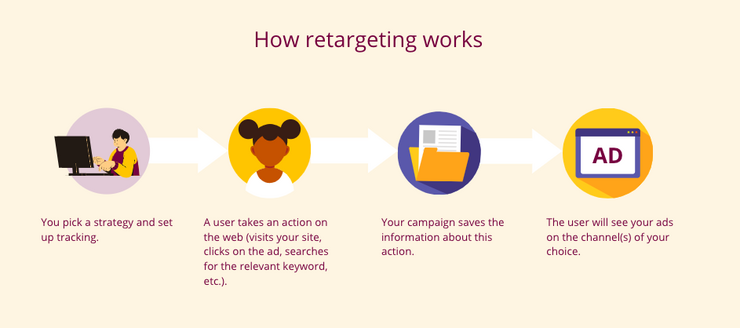In the vast and dynamic realm of digital marketing, one term holds significant weight: retargeting. For those unfamiliar with the concept, it might sound like jargon from a distant galaxy. However, it's a fundamental strategy employed by businesses worldwide to enhance their online presence, engage with potential customers, and ultimately drive conversions [see here 7 Top Ways to Drive Conversions by Forbes]. So, what exactly is retargeting, and how is it used effectively?
Retargeting is a marketing technique that allows businesses to re-engage with users who have previously interacted with their website or digital content. The idea is simple yet powerful: by tracking users' online behaviour, such as visiting a website, clicking on a specific product, or abandoning a shopping cart, businesses can strategically display targeted ads to these users as they browse other websites or social media platforms.
At its core, retargeting leverages the concept of "intent." When a user visits a website or expresses interest in a product or service, they demonstrate a certain level of intent to explore or make a purchase. However, the reality is that many users do not convert immediately. They might get distracted, compare options, or simply need more time to make a decision. Retargeting allows businesses to stay top-of-mind during this decision-making process by showing relevant ads to remind users of their initial interest.
So, how exactly is retargeting implemented?
- Pixel Tracking: One common method is through the use of pixels or cookies—small pieces of code placed on a website that track user activity. When a user visits the website, the pixel collects data and sends it back to the retargeting platform. This data is then used to tailor ads based on the user's behaviour.
- Email Retargeting: Another approach involves leveraging email lists. Businesses can create custom audiences by uploading email lists of existing customers or leads to platforms like Facebook or Google Ads. These platforms then match the email addresses with user accounts and deliver targeted ads to those individuals.
- Dynamic Retargeting: This advanced technique involves displaying personalized ads based on the specific products or pages a user interacts with. For example, if you looked at a particular pair of shoes on an e-commerce website but didn't make a purchase, dynamic retargeting would show ads featuring those exact shoes, enticing you to complete the purchase.
Now, let's explore its benefits and why businesses should incorporate it into their marketing strategies.

- Increased Conversions: By re-engaging with users who have already shown interest in your products or services, retargeting can significantly increase conversion rates. Studies have shown that retargeted visitors are more likely to convert than first-time visitors, as they are already familiar with your brand and offerings.
- Improved Brand Awareness: Retargeting keeps your brand top-of-mind by maintaining a presence across various online channels. Even if users don't convert immediately, seeing your ads repeatedly reinforces brand recognition and increases the likelihood of future engagement.
- Targeted Advertising: Unlike traditional advertising methods that cast a wide net, retargeting allows businesses to target specific audiences based on their previous interactions. This precision targeting ensures that ads are relevant and timely, leading to higher engagement and ROI [Return on investment].
- Cost-Effective: Retargeting campaigns often yield a higher ROI compared to other marketing strategies due to their targeted nature. By focusing on users who have already expressed interest, businesses can optimize their ad spend and maximize conversion rates.
To sum up, retargeting is a POWERFUL tool in the digital marketer's arsenal, offering a strategic way to reconnect with users and drive conversions. By leveraging user intent and delivering personalized ads, businesses can nurture leads, increase brand awareness, and ultimately boost their bottom line. As the digital landscape continues to evolve, incorporating retargeting into your marketing strategy is essential for staying competitive in today's market. Give it a try!
